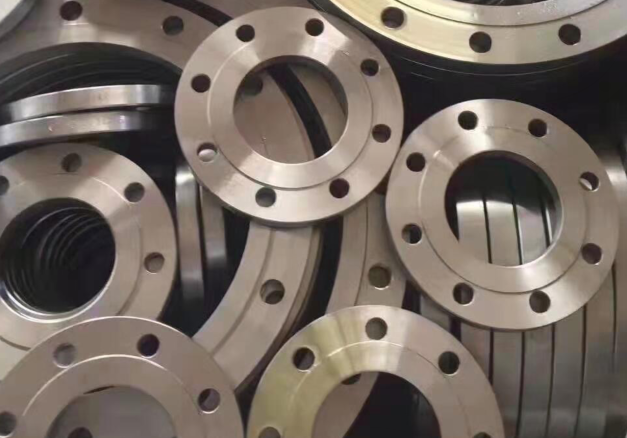What is a pipe flange?
Pipe flanges are important components for connecting pipes, valves and other equipment, and are usually composed of flanges, sealing gaskets, bolts and nuts. In industrial pipeline systems, the function of flanges is to connect, support and seal pipelines to ensure the safety and reliability of pipelines during operation.
Pipe flange structure and classification:
Pipe flanges can be divided into ordinary flanges and high-pressure flanges. Common structures include butt welding flanges (Butt welded pipe fittings), spiral web welding flanges, flat flanges, flanges, etc. In terms of specifications, it can be divided into small flanges of DN10-DN600mm, medium-sized flanges of DN600-DN2000mm and large flanges of DN2000 and above.

Pipe flange application scenarios:
1. In the field of industrial pipelines, flanges are widely used. In industries such as petroleum, chemicals, natural gas, papermaking, thermal power generation, sewage treatment, etc., flanges are often used to connect pipelines and equipment and ensure the safety and reliability of the system. Through the selection of different materials, it can adapt to different media and working environments.
2. In the marine field, flanges are mainly used to connect marine pipeline systems and equipment, such as marine oil pipes, steam pipes, etc., which require good sealing performance, corrosion resistance, high temperature resistance and other characteristics. At the same time, flanges can also be used in structural components of ships, such as steel plate flanges, marine cast iron flanges, etc.
3. In the construction field, flanges are often used to connect pipes and equipment in buildings, such as hot and cold water pipes, ventilation ducts, etc. In addition, flanges can also be used in water treatment systems, sewage pipes, underground heating and ventilation systems and other fields to ensure the normal operation and safety of the system.
Things to note when selecting and using pipe flanges:
1. Pipe pressure and temperature: When selecting a flange, you need to consider the pressure and temperature of the pipe and other parameters to ensure a reliable connection between the flange and the pipe and avoid air leakage and water leakage.
2. Material selection: Flange materials used in different scenarios are also different, such as
carbon steel,
stainless steel, copper, cast iron, etc. You need to choose the appropriate material according to the specific scene and needs.
3. Sealing: In order to ensure sealing, the flange connection needs to be sealed with a sealing gasket, and the sealing gasket also needs to choose a suitable material and model.
4. Pay attention to installation: When installing flanges, they need to be installed correctly in accordance with specifications and requirements, and use appropriate tools and bolts to avoid failures caused by improper installation.
Summarize:
From the above introduction, we can see that flange, as one of the important components for connecting pipelines, equipment and structural components, has a wide range of applications. Whether in industrial pipelines, ships, or in the construction field, flanges play an irreplaceable role. Therefore, when using flanges, it is necessary to select suitable types and materials according to different application fields and environments to ensure the normal operation and safety of the system.
Go here to learn more: Stainless steel pipe fittings


